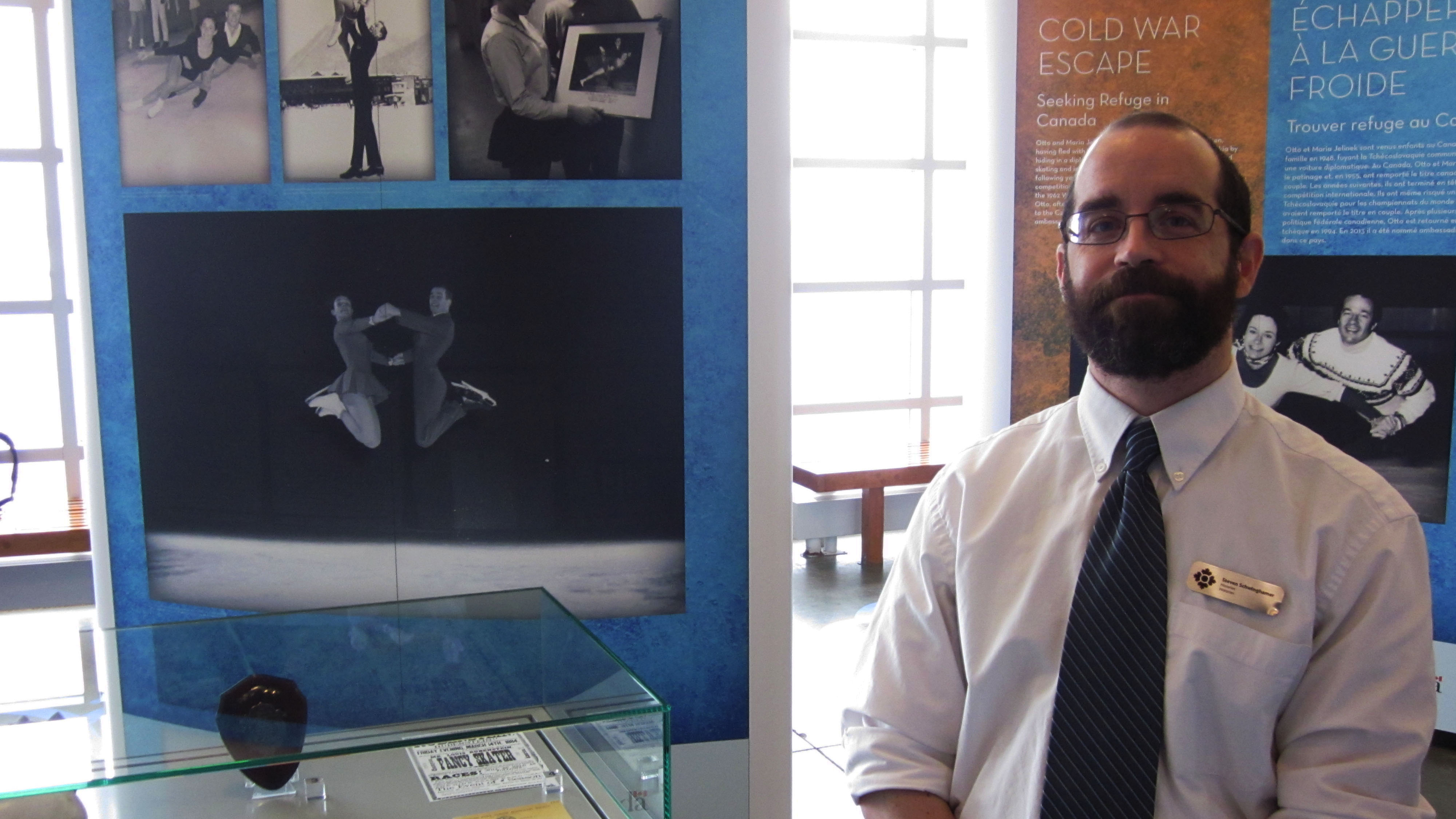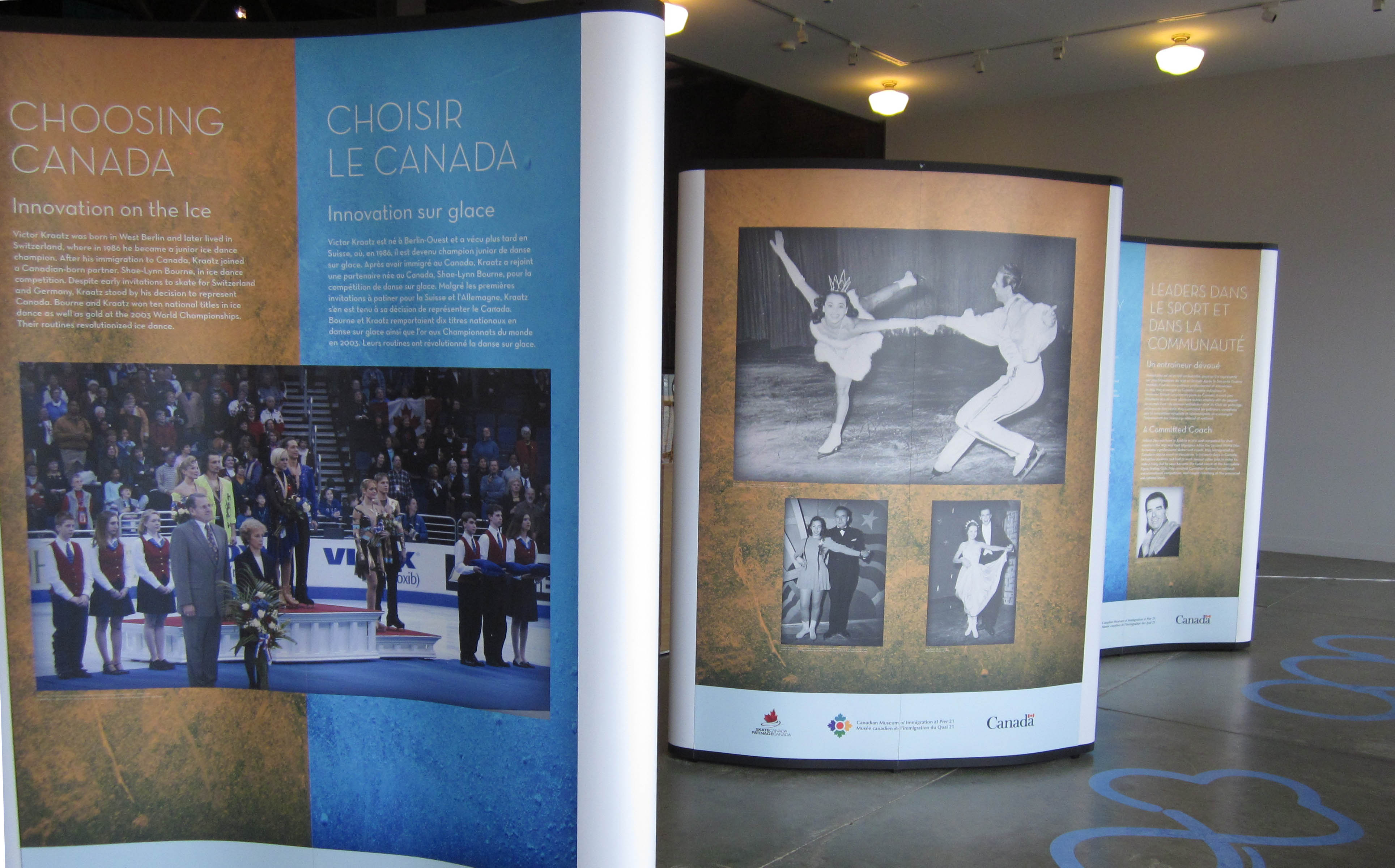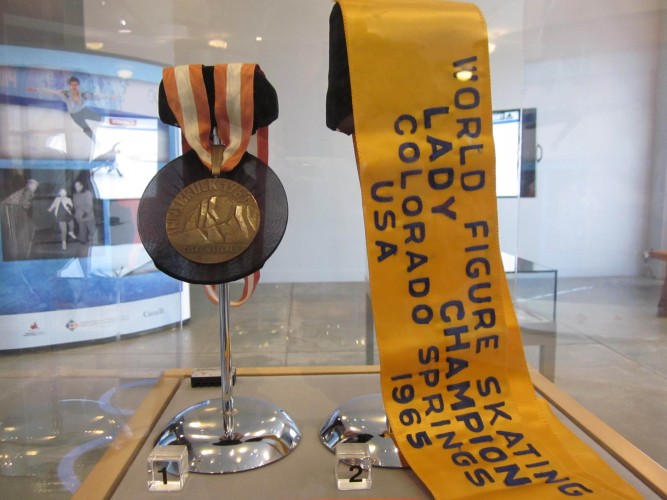History
Halifax museum opens new exhibit exploring belonging, identity through figure skating
New exhibit at the Canadian Museum of Immigration at Pier 21 focuses on how immigration shaped the sport in Canada

caption
Steve Schwinghamer, historian at the Canadian Museum of Immigration at Pier 21, in the new Perfect Landings exhibit.The story of Louis Rubenstein, the “Father of Canadian Figure Skating,” is only one of many stories that relate how immigration shaped figure skating in Canada.
Rubenstein was born in Montreal to Polish Jews in 1861. His parents came to Canada after running away from Russian rule.
In the late 1800s, Rubenstein represented Canada in an international skating competition in Russia. There he overcame harsh sentiments of antisemitism and won a gold medal.
Rubenstein also created the Amateur Skating Association of Canada, which is now known as Skate Canada.
The Canadian Museum of Immigration at Pier 21 partnered with Skate Canada to create its new exhibit: Perfect Landings, which commemorates many other stories like these of immigrants shaping figure skating throughout Canadian history.

caption
Perfect Landings looks at how immigrants affected everything from technique to technology in Canadian figure skating.The exhibit, which opened over the weekend, was created to complement the national skating championships set to start Monday.
Steve Schwinghamer, a historian at Pier 21, says focusing on sport “works as a lens” to anchor other themes in the museum.
“(These are) themes like questions of admissibility, questions of belonging and integration in Canada. But also personal things like identity,” he says. “Through the lens of the experience of figure skaters, of coaches, of builders of the sport, we can get to all of those.”
But there are also more subtle parts to the exhibit.
The first panel mentions First Nations playing a part in the history of skating. Although it’s not a prominent element of the exhibit, Schwinghamer says there’s proof they had skating technology — bone blades — before the arrival of Europeans.
A second undertone is the role of gender in figure skating. Schwinghamer says immigration is a highly gendered process, much like figure skating. But at the same time, “you have people using the sport as a way to successfully negotiate and overcome prejudices of the time.”
The Burka family
Schwinghamer gives the example of Ellen Burka, a Holocaust survivor who came to Canada in 1951. Soon after she arrived with her family, her husband left her and their two daughters.
“She made a living as a skating coach. This was acceptable and respectable at the time,” says Schwinghamer. “She’s an icon in the field, having been an immigrant poor, single mom in the ’50s.”

caption
Petra Burka’s bronze medal from the 1964 Winter Olympics.Burka’s daughter, Petra, won a bronze medal for Canada at the 1964 Winter Olympics in Innsbruck. The medal is one of the artifacts on display at Perfect Landings. With Ellen Burka’s Holocaust history, Schwinghamer says her daughter’s medal represents more than just a sporting achievement.
“It taps us into some of the biggest issues in twentieth century history and some of the most important themes that we can present in the museum,” he says.
Schwinghamer will give a free tour and talk on Jan. 21 followed by the screening of Skate to Survive, a 2007 film about the life of Ellen Burka.
Schwinghamer hopes the exhibit acts as inspiration for people to “think about their hobbies, the recreation and aspect of culture they’re attached to and consider that fusion of expertise, of talent, of tradition that results in the encounter we have with sport in Canada now.”
